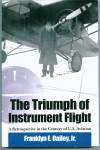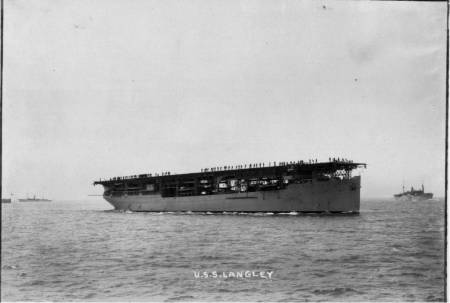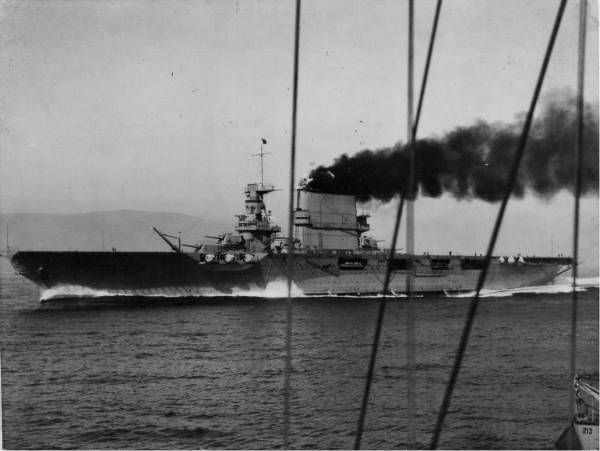
-------
.

Read The Triumph of Instrument Flight
- Navy Aerial Reconnaissance
- Warships at Morocco-1942
- Aircraft Carriers for Torch
- Battle for Morocco
- Bridging World Wars
- Supply and Support
- Husky, Palermo, Messina
- Bloody Salerno
- Luftwaffe Standoff Weapons
- Aircraft of World War II-"friendlies"
- Long "slog" at Anzio
- USS West Point AP23 War Cruise-part 1
- USS West Point AP23 War Cruise-part 2
- Singapore, Fateful Stop on "Joan's Journey"
- Update West Point
- Part I, Briggs on Casablanca, Sicily
- Part II, Briggs on Anzio
USS Ranger, CV-4, lead U.S. carier at Casablanca; she ferried fighters to Iceland, Malta, defying U-boats and Luftwaffe . USS Langley came earlier. So did Lexington and Saratoga
Copyright 2013
Franklyn E. Dailey Jr., Capt. USNR (Ret), appears in episodes of the History Channel series, "Patton 360:" He is the author of "Joining the War at Sea 1939-1945," which provides detail on World War II invasions at Casablanca and Sicily recounted in Patton 360. This book now in its 4th Edition and covers all five Allied invasions in the Mediterranean. In addition to the two noted above, the book includes Salerno (the toughest by far), Anzio (a long slog) and Southern France, which gave Eisenhower his Mediterranean troop and logistics delivery ports and greatly accelerated the push against the Wehrmacht on the western front.
Ships and Aircraft of World War II(many photos from U.S. Navy WW 2 Recognition Training Slide Set; will resume soon)

The USS Ranger CV-4, was the U.S. Navy's first fleet carrier built as a carrier from the keel up. She could make 29 knots. This view shows her elevator on the stern slightly depressed below the flight deck. The three stacks on each side would fold down during flight operations. Ranger and a contingent of four Sangamon class escort carriers (ACVs) comprised U.S. air assault forces during the North African operation, Nov. 8-12, 1942. Chenango carried 76 P-40s to be flown off to the airfield at Port Lyautey once it was captured, to act as Casablanca's defensive fighter force once that city was secured. That left Ranger, and ACVs Sangamon, Suwannee, and Santee to suppport the landings; their fighters were F4-Fs; their torpedo planes were TBFs; their divebombers were SBDs. In periods when the wind was light the ACVs (their best speed was under 20 knots) could not launch their aircraft.

The original USS Langley helped put the U.S. Navy into carrier operations. As pictured, a hull with a flight deck on top.

F4F, carrier fighter by Grumman, with RAF markings; in U.S. Navy markings, this plane flew from the USS Ranger and likely from the carrier below

Belching black smoke, a no-no in WW II, this is the Lexington CV-2 or the Saratoga CV-3 with original 8" guns.

TBF, carrier torpedo plane, by Grumman; TBFs flew at the Battle of Midway

SBD, divebomber, by Douglas
French Dewoitine defending fighter aircraft were a factor in the opening hours at Casablanca. Anti-aircraft fire was a factor that persisted until the final units of the French Navy, including its shore defense forces, agreed to put down their arms on November 11. Some of Task Force 34's heaviest losses occurred after the French resistance ended. U-boats got torpedoes into six of our landing invasion fleet at the Fedala anchorage, surely a low point in the U.S. Navy's efforts in World War II.
Ranger, built in the early 1930s, was scrapped after the war.